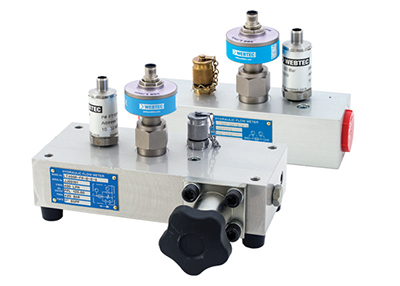 Webtec has introduced a series of new SAE J1939 CAN hydraulic sensors for OEM mobile and industrial applications where customers require real-time monitoring of hydraulic flow, pressure and temperature around the clock. Designed for closed loop control on high-pressure hydraulic systems, the sensors help users predict imminent hydraulic failure or they can be used to perform diagnostic fault-finding, ultimately helping to prevent or reduce downtime and warranty claims.
Webtec has introduced a series of new SAE J1939 CAN hydraulic sensors for OEM mobile and industrial applications where customers require real-time monitoring of hydraulic flow, pressure and temperature around the clock. Designed for closed loop control on high-pressure hydraulic systems, the sensors help users predict imminent hydraulic failure or they can be used to perform diagnostic fault-finding, ultimately helping to prevent or reduce downtime and warranty claims.
The new J1939 CAN pressure sensors are intended for mounting on a test point or onto the CT range of J1939 CAN turbine flow meters to provide a convenient digital solution for the measurement of pressure, flow and temperature on pumps, valves and hydrostatic transmissions, for example. The CT flow meter can be installed anywhere in the hydraulic circuit for production or development testing, commissioning and monitoring of control systems. Flows from 1 to 1500 lpm (0.25 to 400 gpm) can be measured at up to 480 bar (7000 psi). Pressure sensors can also be offered with measurement capability up to 1000 bar (14,400 psi). Moreover, with the addition of a manual loading valve on the meters, further test scenarios can be simulated and monitored, such as pump efficiency.
The benefit of sensors using the SAE J1939 CAN protocol, which is widely used on off-highway diesel engine machinery, is that the signal is transmitted digitally and unlike an analogue signal is much less susceptible to attenuation or interference ensuring both better repeatability and accuracy. Furthermore, sensors are connected in series so just one cable needs to be connected to the machine PLC, where multiple cables might be required for analogue sensors.
The CT range of turbine flow meters are available with a wide range of outputs including mA, 5V, Sensor Recognition, CAN-OPEN and J1939 CAN. All flow meters, which are calibrated to 21 cSt as standard, are compatible with a wide range of hydraulic oils, lubrication oils and fuels. Porting is BSPP or SAE (bi-directional operation), while an integrated loading valve is optional. An extensive range of accessories can also be offered.
Webtec
www.webtec.com
Filed Under: Mobile Hydraulic Tips, Sensors, Sensors & Gauges